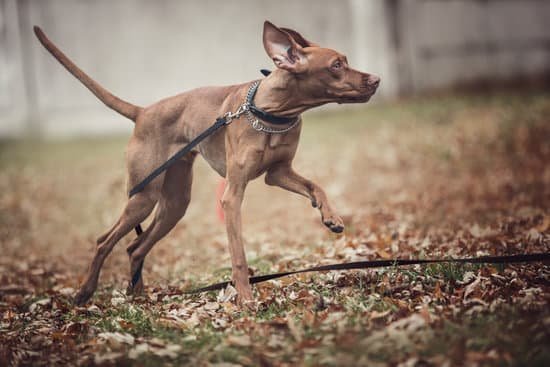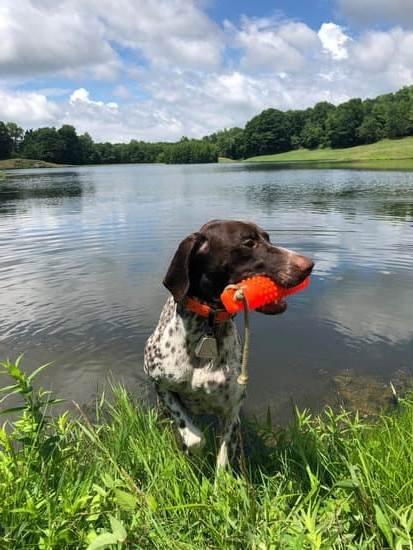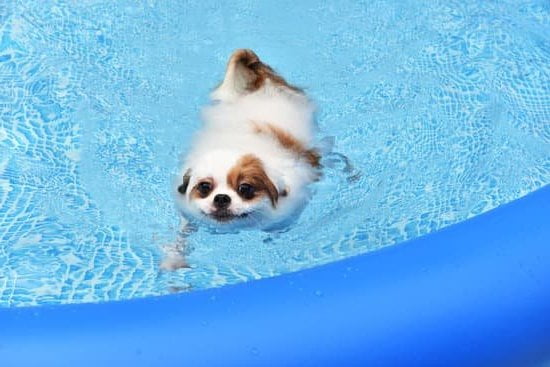When it comes to effectively training your dog, having the right tools is crucial. One such tool that has gained popularity among trainers and pet owners alike is the slip lead. In this article, we will explore the importance of slip leads in dog training and discuss why they are considered one of the best options for achieving successful results.
Slip leads are designed to provide gentle control and guidance while teaching obedience and leash manners to dogs. They consist of a collar integrated with a leash, allowing for easy handling and correction during training sessions. The slip lead works by tightening around the dog’s neck when tension is applied, signaling them to adjust their behavior.
One of the key benefits of using slip leads is their versatility. Whether you have a new puppy or an adult dog, a slip lead can be adjusted to fit any size or breed. They are especially useful when working on basic commands, loose-leash walking, or addressing behavioral issues such as pulling or lunging. The simplicity and effectiveness of slip leads make them an essential tool for both professional trainers and novice dog owners.
In the following sections, we will delve deeper into what makes a good dog slip lead and provide recommendations for some of the top products in the market. Additionally, we will explore slip leads designed specifically for high-energy or reactive dogs, as well as those compatible with gentle training methods using positive reinforcement techniques. So let’s get started on finding the best dog slip lead that suits your training needs.
What to Look for in a Dog Slip Lead
When it comes to choosing a dog slip lead for training, there are several factors to consider. These key features will ensure that you select the right slip lead for your specific needs.
- Material Quality: Look for slip leads that are made of durable and high-quality materials such as nylon or leather. These materials are strong enough to withstand pulling and tugging during training sessions.
- Durability: Make sure the slip lead you choose is built to last. Check for reinforced stitching and sturdy hardware like metal rings and buckles. This will ensure that the slip lead can handle the wear and tear of regular training sessions.
- Adjustability: A good slip lead should be easily adjustable to fit your dog comfortably. Look for slip leads with multiple adjustment points or those that can be customized to fit your dog’s neck size.
In addition to these essential features, there are also some additional considerations to keep in mind when purchasing a slip lead:
- Size and Length: The size and length of the slip lead should match the size and breed of your dog. It’s important to choose a slip lead that allows you to have proper control over your dog without causing discomfort.
- Additional Features: Some slip leads come with extra features like reflective strips or padding on the handle for increased visibility and comfort. These features can be beneficial if you plan on taking your dog out for walks or training sessions in low-light conditions or rough terrains.
By considering these factors, you will be able to narrow down your options and find a dog slip lead that meets all your requirements for effective training. Make sure to prioritize durability, adjustability, and material quality when making your final decision.
Top 5 Dog Slip Leads for Training
To assist readers in selecting the best dog slip lead for their training needs, this section will provide a detailed review and comparison of the top 5 dog slip leads available in the market. Each slip lead will be analyzed based on its features, performance, and value for money, allowing readers to make an informed decision.
1. Slip Lead A:
- Material: Nylon
- Durability: High
- Adjustability: Yes
- Size/Length: Adjustable from 4 to 6 feet
– Additional Features: Reflective strips for increased visibility 2. Slip Lead B:
- Material: Polypropylene
- Durability: Medium
- Adjustability: No
- Size/Length: 6 feet
– Additional Features: None 3. Slip Lead C:
- Material: Leather
- Durability: High
- Adjustability: Yes
- Size/Length: Adjustable from 3 to 5 feet
– Additional Features: Extra padding for added comfort 4. Slip Lead D:
- Material: Paracord rope
- Durability: Very high
- Adjustability : Yes
- Size/Length : Adjustable from 4 to 7 feet
– Additional features : Reflective stitching and double handles for better control 5. Slip Lead E:
- Material : Cotton blend
- Durability : Medium
- Adjustment ability : No
- Size / Length :5 feet After thoroughly analyzing each slip lead’s features and performance, it is evident that Slip Lead D stands out as the top choice for training purposes. With its durable paracord rope material,, adjustable length, reflective stitching, and double handles for enhanced control, this slip lead offers both reliability and functionality.
However, it is important to note that Slip Lead A is also a strong contender due to its high durability, reflective strips for increased visibility, and adjustability. Depending on the specific training needs and preferences of the dog trainer, any of these top 5 slip leads can be a suitable option.
By providing this comprehensive review and comparison, readers can make an informed decision based on their training requirements and budget constraints.
Best Slip Leads for High-Energy or Reactive Dogs
High-energy or reactive dogs require special attention and training techniques to address their specific behavioral issues. When it comes to slip leads, there are certain features that can greatly assist in training these types of dogs. In this section, we will review and discuss the best slip leads available in the market that are specifically designed for high-energy or reactive dogs.
- Slip Leads with Double Handles: These slip leads come with an additional handle located near the collar. This design provides better control and allows for quick restraint when needed. The second handle can be used to keep the dog close during distractions or to prevent lunging towards other animals or people.
- Martingale Design Slip Leads: Martingale slip leads have a loop at one end that tightens when tension is applied, creating a gentle pressure around the dog’s neck. This can be particularly useful for dogs who tend to pull excessively on walks, as it helps discourage pulling behavior without causing harm or discomfort.
- Slip Leads for Difficult Environments: Some slip leads are specifically crafted to withstand challenging environments or activities such as hiking, agility training, or outdoor sports. These leads are made with durable materials and often have additional features like reinforced stitching or heavy-duty hardware to ensure they hold up in demanding situations.
By using slip leads that cater specifically to the needs of high-energy or reactive dogs, trainers can effectively manage their behavior and provide them with appropriate guidance during training sessions. It is important to choose a slip lead that offers optimal control without causing discomfort or harm to the dog.
Slip Leads for Gentle Training Methods
When it comes to dog training, many trainers prefer to use gentle and positive reinforcement techniques. This approach focuses on building a strong bond with the dog while teaching them desired behaviors. Slip leads that are compatible with these training methods are designed to provide control and guidance without causing discomfort or aversion in dogs.
One important feature to look for in slip leads catering to gentle training methods is the material used. Soft and gentle materials such as nylon or cotton are commonly preferred as they reduce the risk of chafing or irritation on the dog’s skin. Additionally, slip leads made from these materials are more flexible and allow for more comfortable movements during training sessions.
Another consideration when selecting slip leads for gentle training methods is adjustability. Being able to properly fit the lead ensures that it provides effective control without causing any undue pressure or stress on the dog’s neck. Adjustable slip leads also offer flexibility as the dog grows or if different dogs of varying sizes are being trained using the same lead.
| Slip Lead | Material | Adjustable Length | Additional Features |
|---|---|---|---|
| XYZ Slip Lead | Nylon | Yes, up to 6 feet | Reflective strips for visibility |
| Pawsome Slip Lead | Cotton | Yes, up to 5 feet | Padded handle for extra comfort |
| GentleLeash Slip Lead | Soft nylon blend | Yes, up to 7 feet | Quick-release buckle for convenience |
These slip leads are designed to provide durability, comfort, and control during training sessions. They are carefully made with the dog’s well-being in mind, allowing trainers to focus on positive reinforcement techniques without causing any harm or discomfort.
It is important to choose a slip lead that aligns with your training philosophy and suits both you and your dog’s needs. With the right slip lead, you can build a strong and trusting relationship with your furry friend while achieving successful training outcomes.
DIY Slip Leads for Budget-Conscious Dog Trainers
Creating Your Own Slip Lead
For budget-conscious dog trainers, creating your own slip lead can be a simple and effective solution. Not only does this option save money, but it also allows you to customize the slip lead to meet your specific needs. With readily available materials and a few basic steps, you can create a slip lead that is both functional and durable.
Materials Needed
To make your DIY slip lead, you will need the following materials:
- Strong Rope or Nylon Cord: Choose a sturdy material that can withstand pulling and tugging during training sessions. Nylon rope with a diameter of about 1/4 inch is an excellent choice.
- Metal Ring or Clip: This will serve as the attachment point for the leash to connect with your dog’s collar or harness. A metal key ring or swivel clip works well for this purpose.
- Lighter or Matches: You will need these to melt the ends of the rope slightly to prevent fraying.
Step-by-Step Instructions
- Measure the desired length of your slip lead by considering how much control you need during training sessions. A length of around 4 feet is typically suitable.
- Cut the rope to your desired length using sharp scissors or a knife. Remember that you can always trim it later if needed.
- Use the lighter or matches to carefully melt the ends of the cut rope, forming small melted knots that prevent fraying.
- Thread one end of the rope through the metal ring or clip, folding it back about 6 inches.
- Tie an overhand knot using both strands of rope as if tying a regular knot but leaving a loop large enough for your hand to fit through comfortably.
- Adjust the size of the loop by pulling on both ends until it fits snugly around your wrist when inserted.
- Your DIY slip lead is complete and ready to use.
While homemade slip leads are a cost-effective option, it’s essential to keep in mind that they might not offer the same durability or additional features as store-bought options. Therefore, it’s important to regularly inspect and replace your DIY slip lead if any signs of wear and tear appear.
Tips and Techniques for Successful Training with Slip Leads
Proper Usage and Handling of Slip Leads
When using a slip lead for dog training, it is essential to understand the proper usage and handling techniques to ensure effective training sessions. The first step is to familiarize yourself with the slip lead and its components. Slip leads typically consist of a looped end that acts as both the handle for the trainer and the collar for the dog. It also features an adjustable sliding mechanism that allows you to control the size of the loop.
To put the slip lead on your dog, hold it in your dominant hand with the loop facing up. Position your other hand near your dog’s head, ideally with some treats or positive reinforcement. Gently place the loop over your dog’s head and adjust it so that it sits snugly but not too tight around their neck. It should be loose enough to easily slide off when you release tension.
During training sessions, always hold the slip lead correctly by keeping one hand through the loop handle and gripping it firmly but not aggressively. This grip ensures you have control while also maintaining a calm demeanor. Avoid wrapping or looping the leash around your hand or wrist, as this can cause injury if your dog suddenly pulls or lunges.
Introducing Slip Leads to Your Dog
For dogs who are not used to wearing slip leads, it is important to introduce them gradually and positively associate them with pleasant experiences. Begin by allowing your dog to sniff and investigate the slip lead before attempting to put it on them. Reward any sign of curiosity or interest with treats or praise.
When putting on a slip lead for the first time, do so in a calm environment free from distractions. Use treats or their favorite toy as an enticement while gently sliding the loop over their head. Gradually increase their tolerance by leaving it on for short periods initially, then gradually lengthening those intervals.
As your dog becomes more comfortable with wearing the slip lead, start incorporating it into short, positive training sessions. The slip lead should signify focus and engagement, not punishment or discomfort. Use treats or praise as rewards for desirable behavior and provide guidance and redirection using gentle leash pressure when necessary.
Common Mistakes to Avoid
While slip leads can be effective training tools, there are some common mistakes that trainers should avoid to ensure safety and success. One of the most crucial errors is using excessive force or harsh corrections with the slip lead. Remember that the slip lead works by applying gentle pressure on the dog’s neck to convey messages, not by causing pain or discomfort.
Another mistake is allowing the slip lead to remain tight around your dog’s neck for extended periods. As soon as your dog responds appropriately to a command or request, release tension on the leash to reward and relieve any pressure on their neck. This helps maintain a positive association with the slip lead and prevent any negative effects such as choking or restricted breathing.
Furthermore, trainers should avoid jerking or yanking on the slip lead abruptly. Instead, apply consistent and gradual pressure while giving verbal cues or commands. Abrupt movements can startle your dog and create confusion rather than fostering clear communication.
By understanding proper usage techniques, gradually introducing slip leads to your dog, and avoiding common mistakes, you can make training sessions more successful and enjoyable for both you and your furry friend. Always prioritize patience, positive reinforcement, and consistency in your training approach for optimal results.
Frequently Asked Questions (FAQs) about Dog Slip Leads for Training
As dog owners and trainers consider incorporating slip leads into their training routines, it is common for questions and concerns to arise. In this section, we will address some of the frequently asked questions (FAQs) about using dog slip leads for training.
One common question that dog owners have is whether slip leads are safe to use on their pets. It is important to note that when used correctly, slip leads can be a safe and effective training tool. However, it is crucial to follow proper techniques and ensure that the slip lead is fitted properly. Always consult with a professional trainer or behaviorist if you have any doubts or concerns.
Another frequently asked question relates to the effectiveness of slip leads in different dog breeds or sizes. Slip leads can be used for dogs of all sizes, but it is essential to choose the right size and adjustability for a comfortable fit. It may be necessary to experiment with different slip lead styles or designs to find one that works best for your specific breed or size.
People also often wonder if slip leads are suitable for dogs with behavioral issues or reactive tendencies. Slip leads can indeed be helpful in managing challenging behaviors, especially when combined with appropriate training techniques. Look for slip leads specifically designed with added features like double handles or martingale designs, which provide better control in high-energy or reactive situations.
For more information and guidance on using slip leads effectively, it is recommended to seek professional advice from a certified dog trainer or behaviorist. They can offer personalized recommendations based on your specific training goals and challenges. Additionally, there are many online resources available where experienced trainers share tips and techniques for successful training with slip leads.
By addressing these frequently asked questions about dog slip leads, readers can gain a better understanding of how this training tool can benefit them and their canine companions. Remember that each dog is unique, so it may take some trial and error to find the perfect slip lead for your needs. With patience and consistency, slip leads can contribute to successful training outcomes and strengthen the bond between you and your dog.
Conclusion
In conclusion, choosing the perfect dog slip lead for training success requires careful consideration of various factors. Throughout this article, we have highlighted the importance of slip leads in dog training and discussed the benefits of using them. We have also provided a buying guide with key features to look for when purchasing a slip lead, such as material quality, durability, adjustability, size, length, and additional features.
Furthermore, we have reviewed the top five dog slip leads available in the market and provided a detailed analysis of their features, performance, and value for money. This comparison will assist readers in making an informed decision based on their specific training needs.
For those dealing with high-energy or reactive dogs, we have identified slip leads that are designed to tackle behavioral issues effectively. These slip leads may include features like double handles or martingale designs for better control in challenging situations.
We have also discussed slip leads suitable for gentle training methods that emphasize positive reinforcement and non-aversive techniques. These slip leads are made of soft or gentle materials to avoid discomfort or aversion in dogs while encouraging cooperation and improving the bond between them and their trainers.
Additionally, for budget-conscious dog trainers, we have presented DIY options to create simple yet effective slip leads using readily available materials. While homemade slip leads may come with limitations, they offer cost-effective alternatives to store-bought options.
To ensure successful training with slip leads, we have shared tips and techniques on how to properly use and handle them during training sessions. We have also addressed common concerns through an FAQ section that provides answers regarding slip lead safety, effectiveness, and compatibility with different breeds or sizes.
Frequently Asked Questions
Do dog trainers recommend slip leads?
Dog trainers have different opinions on slip leads. Some trainers do recommend using slip leads as a training tool, particularly for certain situations or breeds where control may be important.
Slip leads can provide quick and effective guidance when teaching dogs to walk on a leash or when addressing specific behavioral issues. However, it’s important to note that not all trainers recommend slip leads, as they can be potentially harmful if used incorrectly or without proper training.
What is the best slip lead for a dog?
Determining the best slip lead for a dog depends on various factors such as the dog’s size, breed, and individual needs. There are several high-quality slip leads available in the market with different features and materials.
A crucial aspect of choosing a slip lead is ensuring that it fits properly and comfortably on the dog’s neck without causing any discomfort or injury. It is advisable to consult with professional dog trainers or seek recommendations from experienced dog owners to identify the most suitable slip lead for your dog.
Are slip leads better for training?
Whether slip leads are better for training largely depends on the specific goals, preferences, and circumstances of each trainer and their canine clients. Slip leads can be a useful tool in certain training scenarios due to their ability to provide immediate feedback and control over a dog’s movement. They allow trainers to quickly correct unwanted behaviors or redirect attention during lessons such as loose-leash walking or heeling exercises.
However, it’s essential to emphasize that effective training involves utilizing a variety of techniques and tools tailored to each individual dog’s temperament, learning style, and specific needs. Ultimately, whether slip leads are better for training will vary based on the trainer’s expertise and understanding of proper usage, as well as their alignment with ethical training principles that prioritize positive reinforcement-based methods over punitive ones.

Welcome to the blog! I am a professional dog trainer and have been working with dogs for many years. In this blog, I will be discussing various topics related to dog training, including tips, tricks, and advice. I hope you find this information helpful and informative. Thanks for reading!





